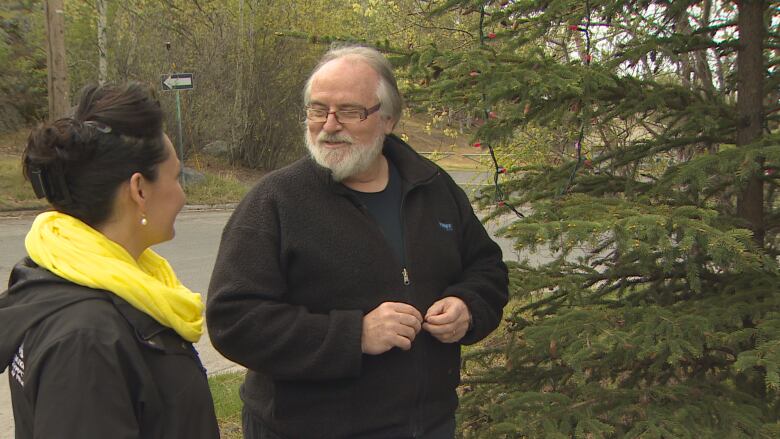Wild N.W.T. ingredients could feed culinary tourism, says Yellowknife foodie
Mike Kalnay says items like caribou moss and spruce tips make European chefs' mouths water

Many people in the North leave the reindeer or caribou moss in their backyards for whom it was intendedcaribou.
But according to one self-proclaimed foodie in Yellowknife, top chefs across the pond are coating the plant in chocolate and serving it for dessert.
"It strikes me that these [European] restaurants are searching for these products, especially wild, organic things from untouched wildernesses. And we've got plenty of that here," says Mike Kalnay.
Kalnay is a food expert who's been to some of the world's top restaurants, and was in Copenhagen, Denmark, last week as a judgefor Best New Restaurant in Europe.
Kalnay says northern products such as caribou moss, fireweed, spruce tips and inconnu may not be veryaccessible in Europe, but the chefs there are seeking them out and finding creative ways to cook with them; from chocolate-covered caribou moss to spruce tips with fish.

Kalnay says the chefs' "mouths watered" when he told them some of these products grew wildly just across the street from his house in Yellowknife.
"They live in a highly urbanized environment with millions of people," Kalnay said. "It's hard to come by this stuff."
He says it's time artisans in the territory take advantage of what's available and use that to draw in more visitors. It's called"culinary tourism."
"Every visitor to a particular destination is trying out different meals," said Fraser Abbott, who's with the Alberta Culinary Tourism Alliance, which supports those in the food industry looking to feed people local products.
"If they stay in a hotel they're likely going to have three meals...So you multiply that over a couple of nights that they're up there, they're going to have a great opportunity to try some of the offerings of the North."
Find the 'secret recipe'
But Kalnay says places like Yellowknife don't take advantage of that.
He met a couple from Hong Kong who had recently visited Yellowknife. They told Kalnay they ran out of restaurant options after their second day. And when they went to cook for themselves, they couldn't find northern ingredients inthe store.

Kalnay says once artisans capture the knowledge and learn the "secret recipe" of the wild ingredients around them, they should keep them safe to make them special offerings of the North.
"We can turn that into a product that we can put on destination dining restaurants."
Abbottsays provinces across Canada are already benefiting from this. He says the North doesn't have to be far behind.
"If you create a cluster wherein a visitor can go to one destination that stands out, try something, and also have three other supporting businesses that take them down the rabbit hole of cultural experiences, you've got a great winning recipe right there."
with files from Shannon Scott, Juanita Taylor












_(720p).jpg)


 OFFICIAL HD MUSIC VIDEO.jpg)
.jpg)



























































































